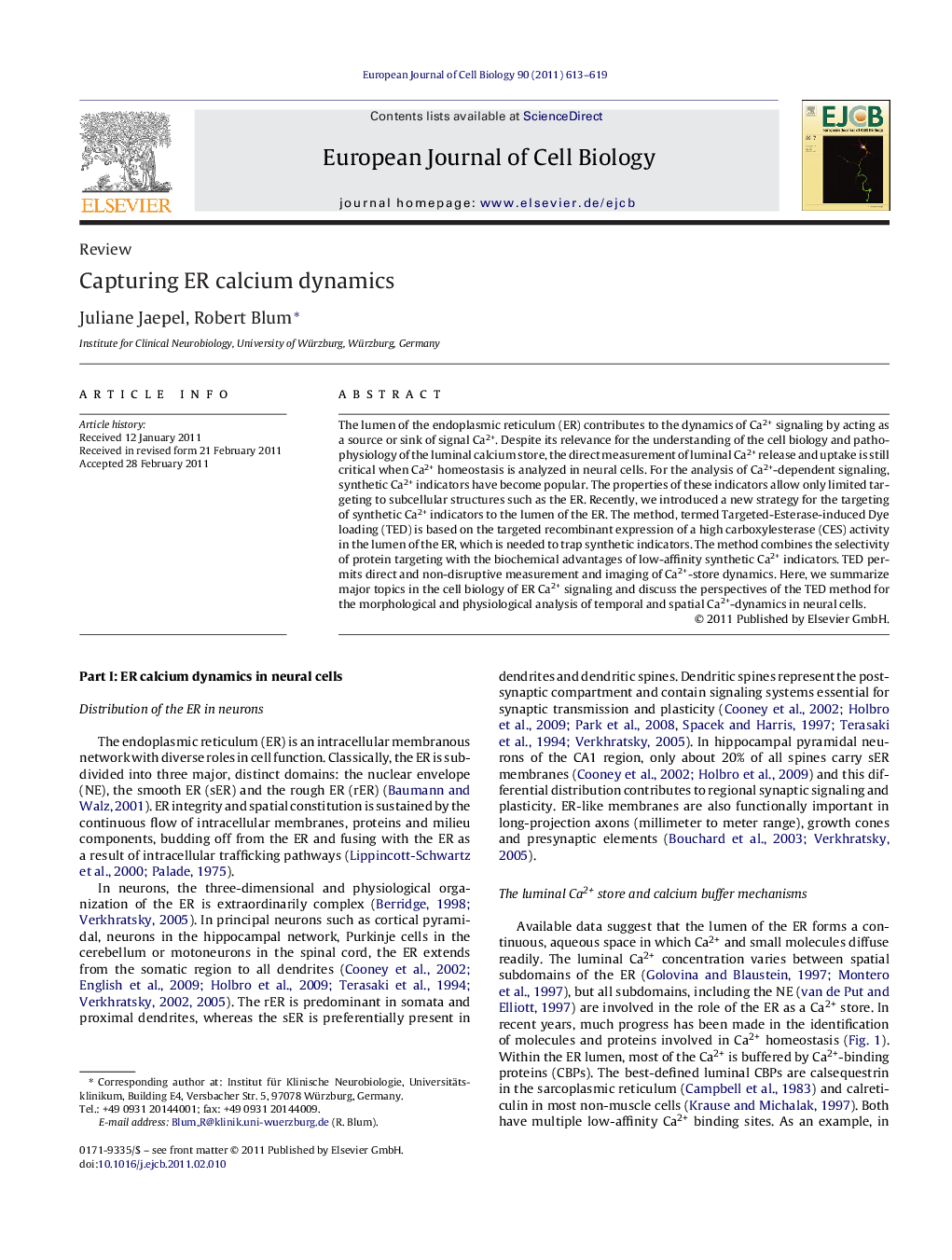| Article ID | Journal | Published Year | Pages | File Type |
|---|---|---|---|---|
| 2178735 | European Journal of Cell Biology | 2011 | 7 Pages |
The lumen of the endoplasmic reticulum (ER) contributes to the dynamics of Ca2+ signaling by acting as a source or sink of signal Ca2+. Despite its relevance for the understanding of the cell biology and pathophysiology of the luminal calcium store, the direct measurement of luminal Ca2+ release and uptake is still critical when Ca2+ homeostasis is analyzed in neural cells. For the analysis of Ca2+-dependent signaling, synthetic Ca2+ indicators have become popular. The properties of these indicators allow only limited targeting to subcellular structures such as the ER. Recently, we introduced a new strategy for the targeting of synthetic Ca2+ indicators to the lumen of the ER. The method, termed Targeted-Esterase-induced Dye loading (TED) is based on the targeted recombinant expression of a high carboxylesterase (CES) activity in the lumen of the ER, which is needed to trap synthetic indicators. The method combines the selectivity of protein targeting with the biochemical advantages of low-affinity synthetic Ca2+ indicators. TED permits direct and non-disruptive measurement and imaging of Ca2+-store dynamics. Here, we summarize major topics in the cell biology of ER Ca2+ signaling and discuss the perspectives of the TED method for the morphological and physiological analysis of temporal and spatial Ca2+-dynamics in neural cells.
